Aloe plants are beautiful succulents that many people enjoy growing. These plants are easy to grow and keep healthy.
However, this does not mean that aloe plants cannot get sick or die. Have you ever tried to grow aloe plants only to have them start dying?
Keep reading to learn seven reasons why your aloe plant may be dying.
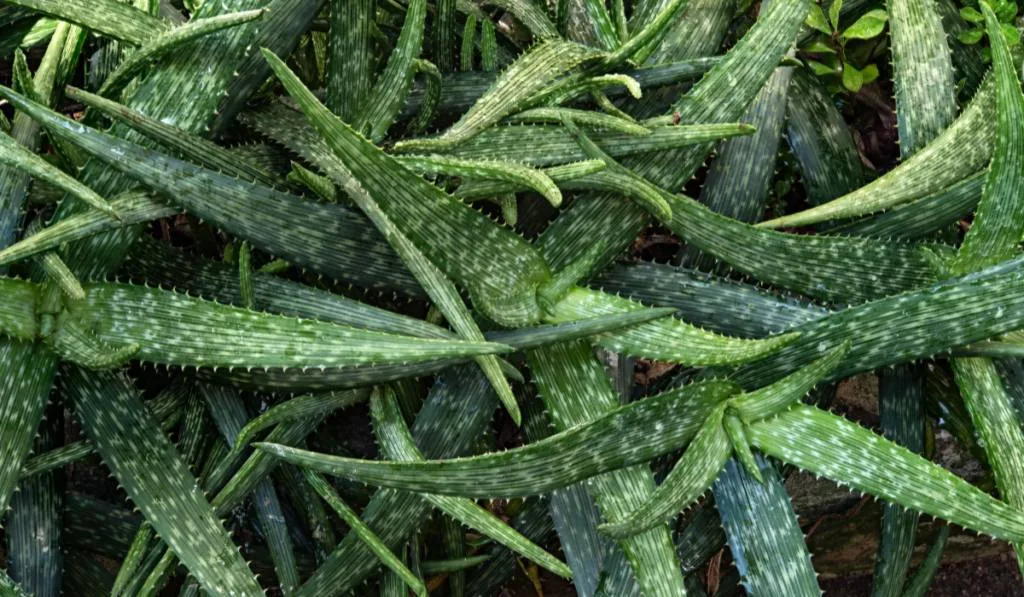
Table of Contents
Why Your Aloe Plant May Be Dying
1. Overwatering
Like other succulents, aloe vera plants prefer dry soil over wet soil.
Overwatering your aloes can be dangerous, as this can lead to root rot and other diseases.
Aloe plants grow very poorly in a moisture-rich substrate. If you notice your aloe plants dying, check how wet the soil is.
When did you last water the plants? How often do you water them? Do you water them in the cooler months?
The answer to the questions above will help you know if you are overwatering your aloes.
2. Overfeeding
In addition to overwatering, plant owners should avoid overfeeding their aloe vera plants.
These plants grow in arid places that have few nutrients in the soil, which means that aloe plants are not used to nutrient-rich soil.
One sign that your aloes are growing in overly nutritious soil is seeing brown edges and tips on their leaves. This is because the plants are absorbing more nutrients from the soil than water.
Be wary of modifying the soil and overfeeding your aloe plants.
3. High Humidity
Humidity is one of the most ignored factors that can affect the growth and survival of plants. Humidity helps plants regulate how much water they collect and release.
Plants growing in an incorrect humidity range may collect more or less water than they need.
Aloe plants do not grow well in high humidity, as they are used to arid environments.
Using a hygrometer, ensure the air humidity around your aloe plants is low. Note that overcrowding plants can also increase humidity, as they can trap moisture below their leaves.
4. Insect Pest Attacks
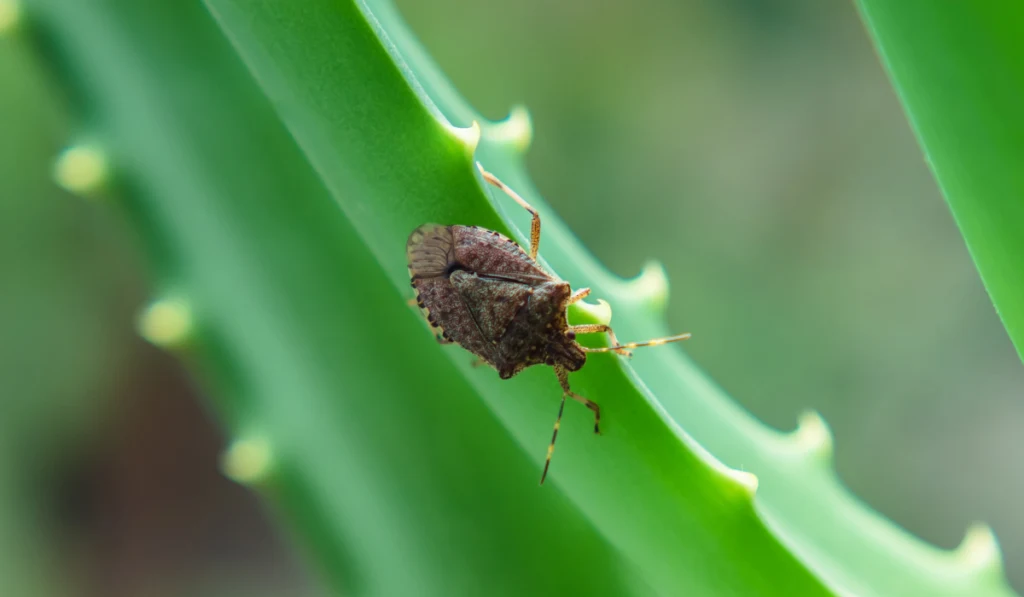
Insects such as aphids, scales, weevils, and whiteflies frequently attack aloe plants. This may be the reason your plants are dying.
Some of these insects will bite your aloe leaves, while others will suck water and nutrients out of them.
Always check your aloe plants for pests. If you cannot see any pests during the day, check the plants at night, as some pests may be nocturnal.
5. Microbial Attacks
Sometimes, the pests that attack your aloe plants can be too small to see.
Fungi, bacteria, and viruses frequently attack aloe plants, especially those growing in improper conditions.
The signs of these microbial attacks differ, but you can look at your aloes’ leaves to know if they are infected.
If you see white spots or mold spreading from leaf to leaf, this can signify a fungal attack.
As for bacteria and viruses, you may notice dry spots on the leaves. These spots can be yellow, brown, or black.
6. Soil Quality
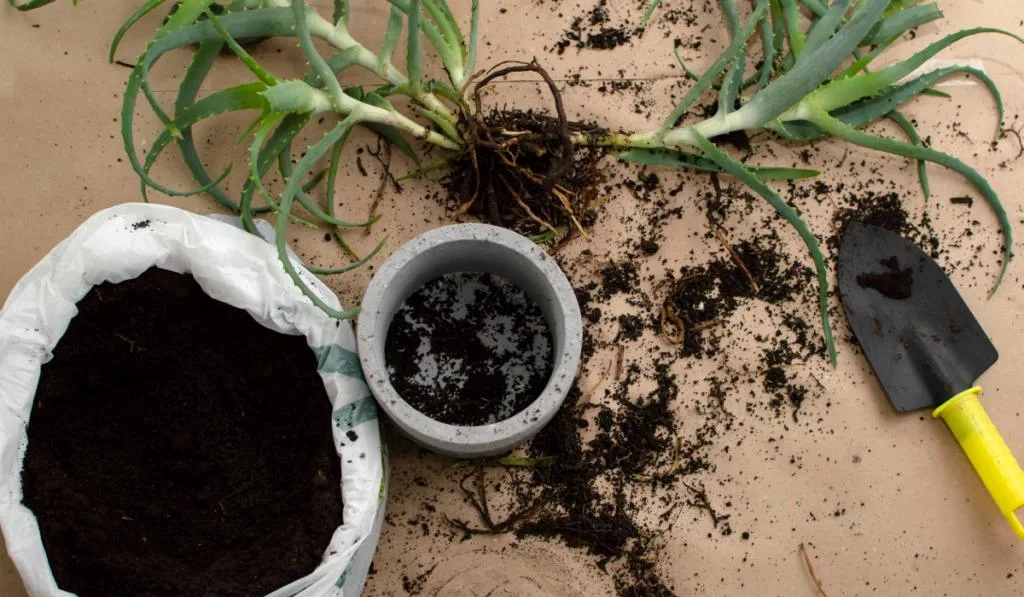
The quality of your aloe substrate is a major factor to consider.
Remember that aloes are succulents that prefer dry to moderately moist soil, so if the soil is too compact and does not drain water quickly, your aloe plants can die.
Make sure your aloes are not growing in compact soil, as their roots cannot breathe easily.
Another factor to watch out for is the pH level. If your aloes are growing in soil with an incorrect pH level, they will struggle to absorb water and nutrients.
7. Insufficient Light
Though aloes may not need as much water as other plants, aloes do need a lot of light. Aloe plants naturally grow in deserts and other places with a large amount of sunlight.
Your aloe plants may be dying due to a lack of sunlight.
You can tell that your aloe plants are not receiving enough sunlight if their leaves are pale.
Pale leaves that look like they’re stretching to grow toward a light source can mean they are not receiving enough sunlight.
Now that we have reviewed different reasons your aloe plants may be dying, let’s look at ways to treat them.
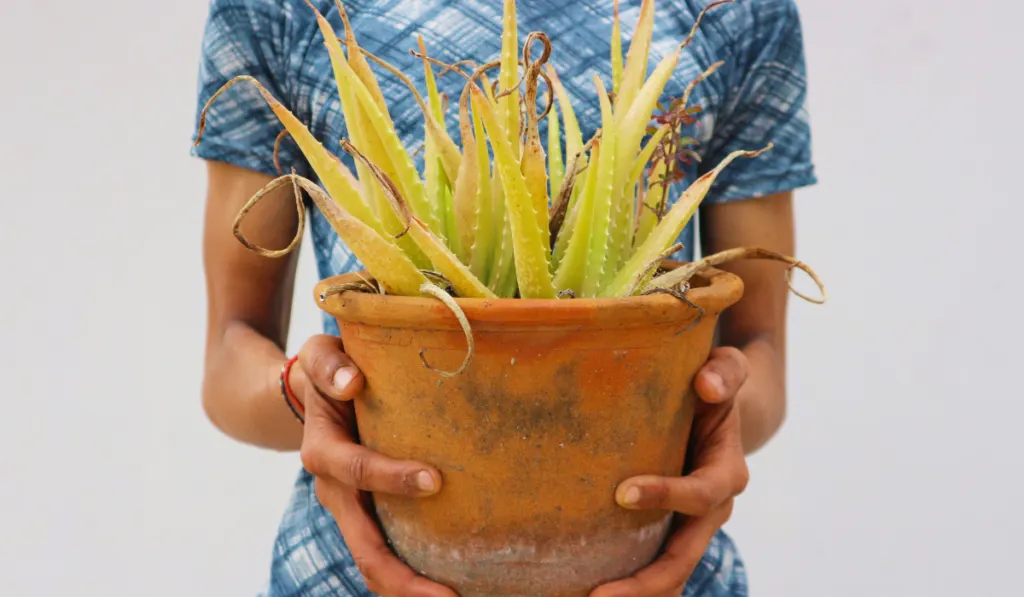
How to Revive Your Dying Aloe Plant
1. Know When to Water
As other succulents, aloe plants do not need a lot of water. Wait until the soil is almost fully dry before watering your aloe plants.
Use your finger or a digital moisture reader to determine how wet the soil is.
You should usually water your aloe plant every five to ten days. Warmer temperatures may mean you need to water more frequently.
Note that you do not need to water your aloe plants in the fall and winter months unless the soil is completely dry.
2. Properly Feed Your Aloe Plants
You can grow aloe plants without feeding them for a whole year.
To do this, you only need to grow them in soil with organic nutrients such as rotted manure, compost, and coffee grounds.
Don’t add extra fertilizer unless the soil has become nutrient-depleted. If you want to use inorganic fertilizer for your aloe plants, you can use slow-release granules.
3. Choose the Right Location

The right environment is the secret to successfully growing any type of plant.
Never grow aloe plants under 50°F, as they do not thrive in cold environments.
The ideal temperature for aloes is 55-80°F, with a humidity level below 50%.
Your aloe plants should receive at least six hours of sunlight a day. If this is not possible, add an artificial light, such as a grow light, in the room.
Ensure proper ventilation and air circulation to avoid overcrowding your aloes.
4. Use Pesticides
To prevent pests from attacking your aloe plants, use pesticides. These pesticides can be chemical-based, like store-bought insecticides, or organic, like neem seed oil.
Spray pesticides on your aloe plants regularly to avoid any insect harming them.

5. Use Fungicides
Fungicides help repel fungi from your aloe plants.
Store-bought fungicides are made with chemical compounds. However, baking soda is also an effective DIY fungicide.
To repel bacteria, viruses, and other types of microbes, you can buy bactericides and other products at gardening stores.
Ensure that you strictly follow the instructions on these products, as they can harm your plants if you overuse them.
Note that you can spray your healthy aloes as well as the sick ones. This can help prevent your healthy aloes from getting infected.
6. Amend the Aloe Substrate
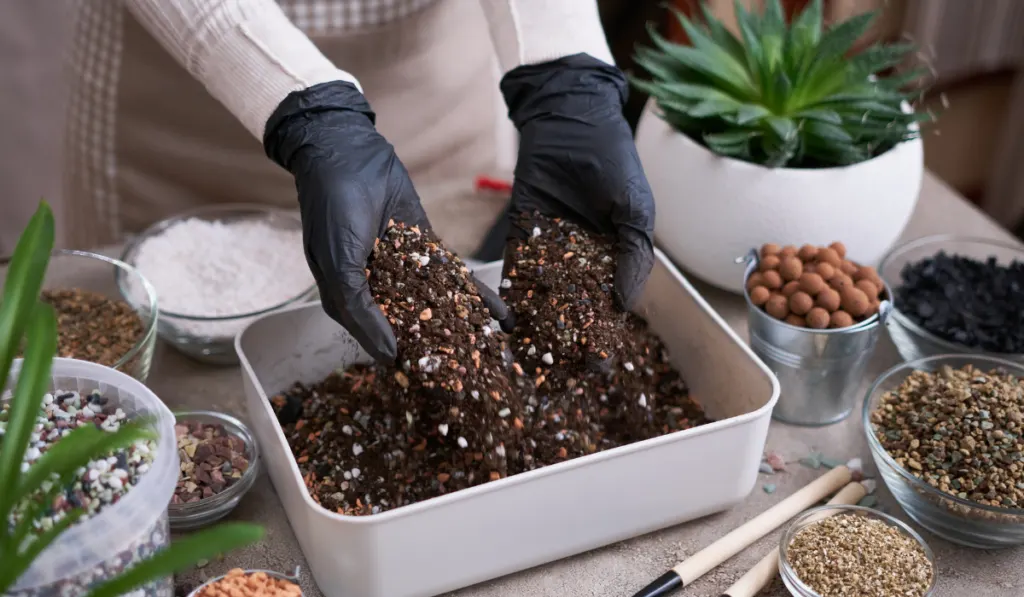
Aloe plants need well-drained and airy soil so that water can quickly drain, and their roots can breathe well.
You cannot get this type of substrate with regular garden soil, so you may need to buy potting mix from a gardening store.
However, you still need to amend the substrate after some months or years, as it can become compacted.
Wood shavings and other organic materials used in making the soil can decompose over time, making the substrate too compact for aloe plants.
This means you will need to replace these organic materials or add more perlite or vermiculite to the substrate.
7. Do Not Abandon Your Aloe Plants
No matter what you do, make sure that you monitor your aloe plants. Though they are hardy plants, they still need your care.
Always check your plants for pests and treat your sick plants with the right product.
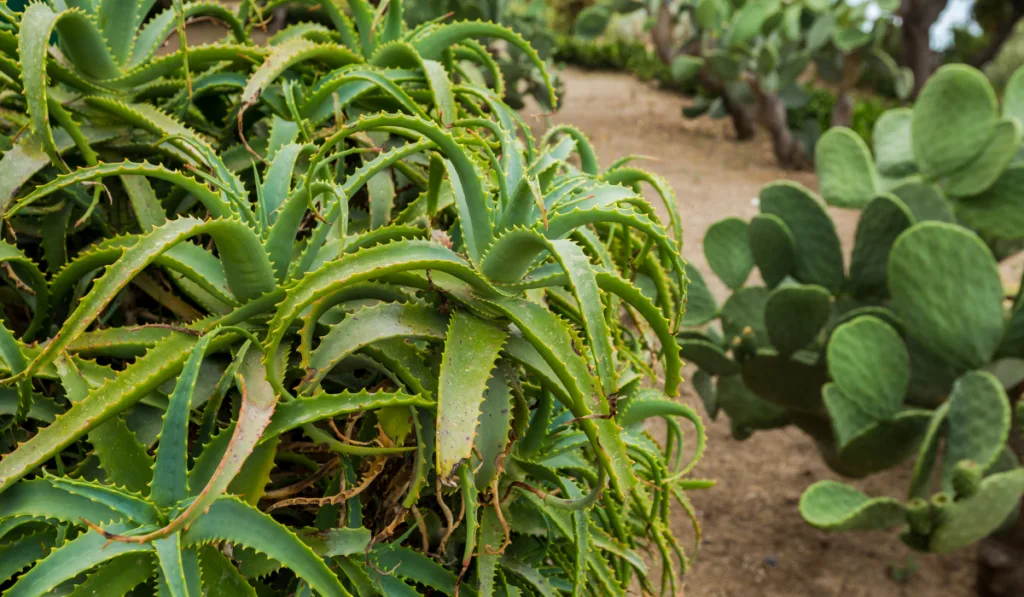
Conclusion
As you can see, there can be many reasons your aloe plants are dying, but most are due to problems in their environment.
Prioritize good growing conditions for your aloe plants and use the tips in this article to keep them healthy.
Resources
Points and tips in this article were written from personal experience and some help from the following sources:
